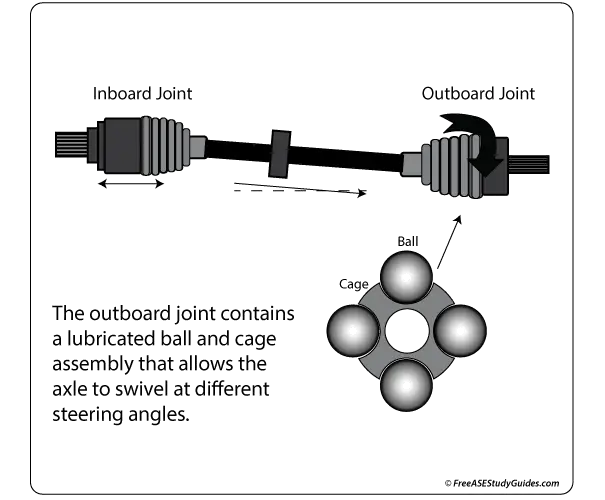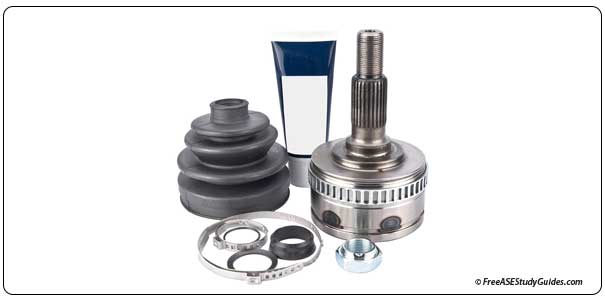CV Joint Boot Repair

CV joints last tens of thousands of miles. This is untrue if the protective boot is loose, cracked, or damaged. The cage and bearings provide the outer CV joint flexibility. The inner trunnion CV joint is a tripod that contains three roller bearings that allow for in and out movement as the vehicle travels over bumps in the road. They are protected by a rubber boot because they are particularly vulnerable to water and dirt intrusion.
A worn inner CV joint hums or thumps while accelerating. A worn outer CV joint makes the most noise while turning, particularly during a U-turn. It makes a cyclic clicking or clacking sound louder as the joint wears.

A visual inspection of a vehicle's CV axle boots is a snap. If the boot has broken or become loose, water and debris have likely intruded, and the entire joint or axle should be replaced. The grease leaks out, making a mess, and the environment leaks in, damaging the sensitive bearings.

Replacing bad axles with remanufactured units is common. But when the boot is beginning to show wear and no damage has occurred, boot kits are available to replace the lubricant and boot before anything happens. This operation is more labor-intensive than just replacing the axle as a unit. It will save the axle's joints from damage.